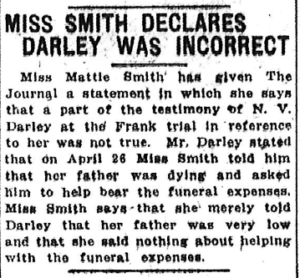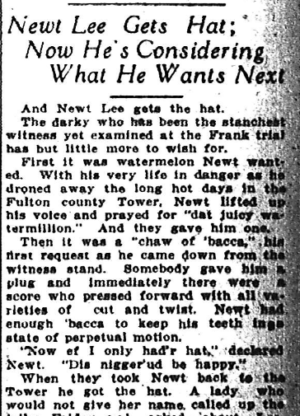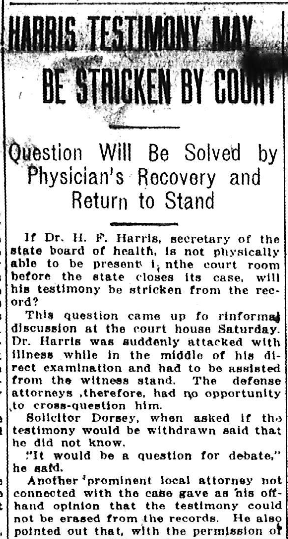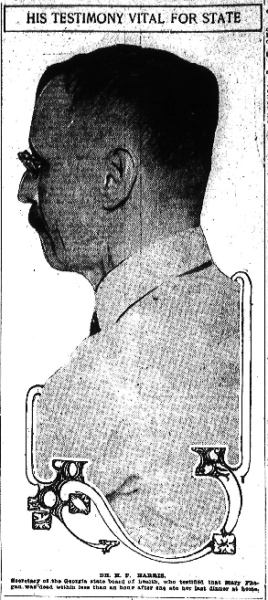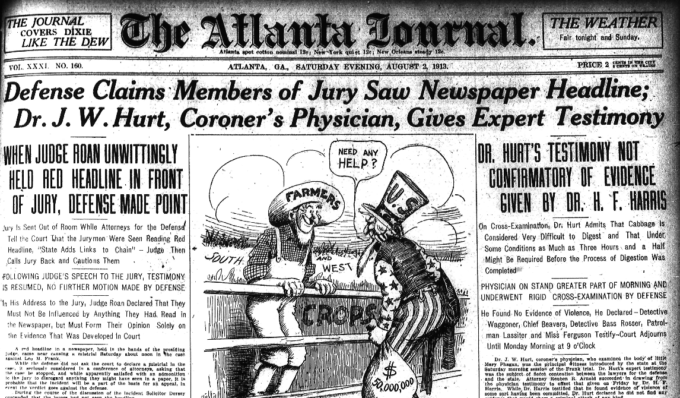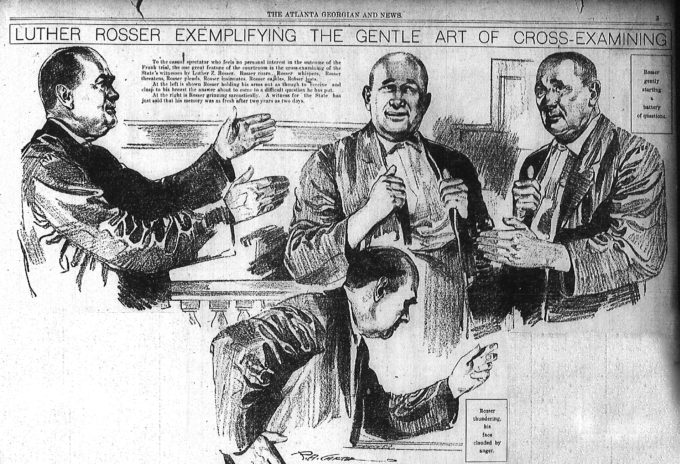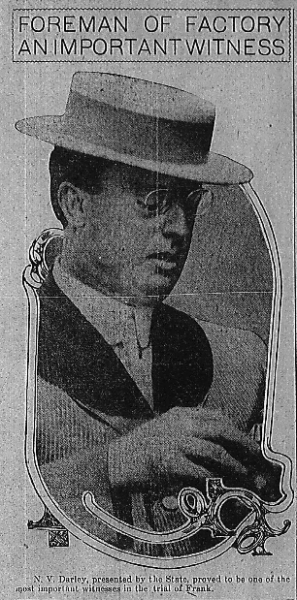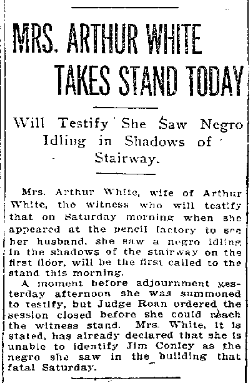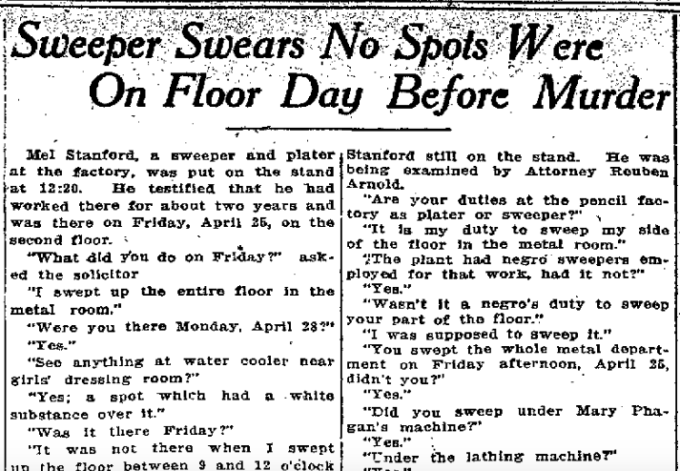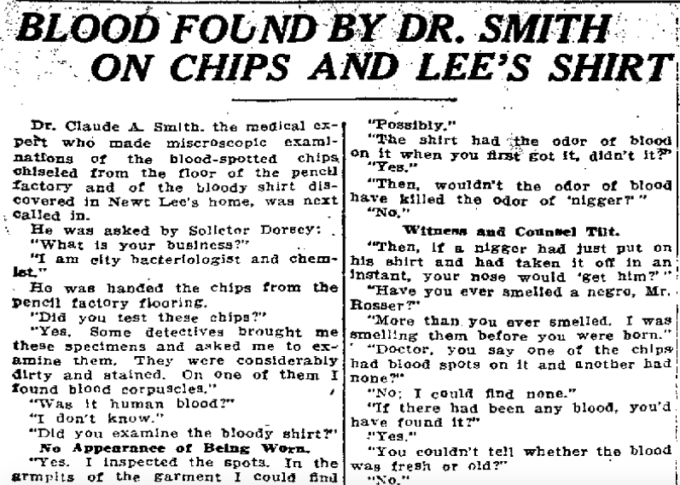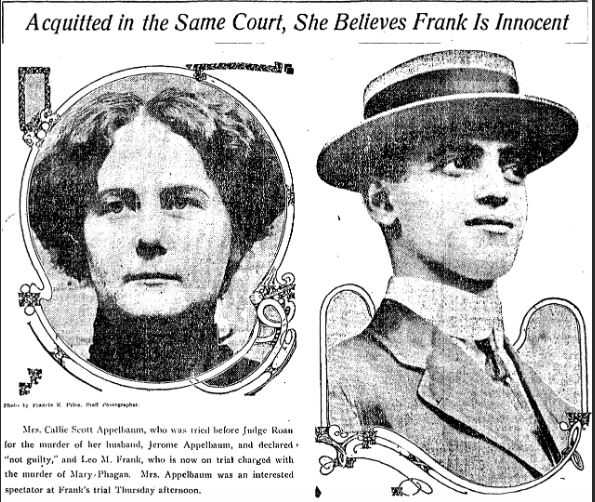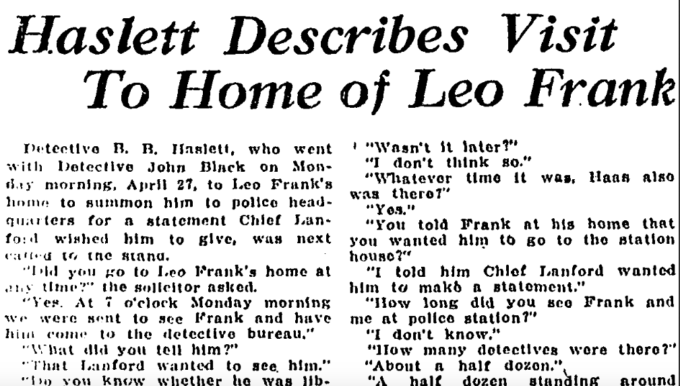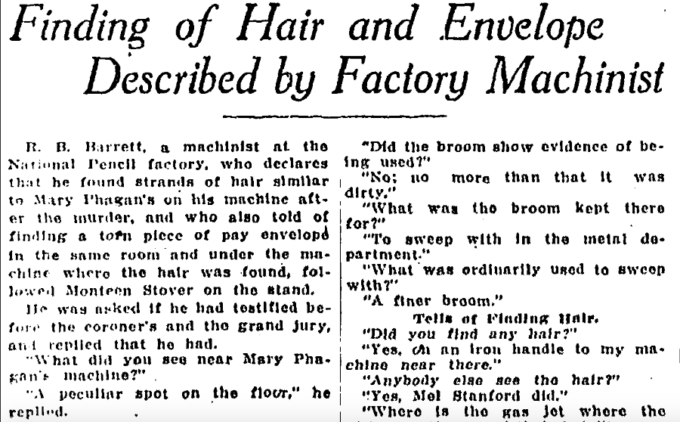Another in our series of new transcriptions of contemporary articles on the Leo Frank case.
Atlanta Journal
August 2nd, 1913
Physician Testifies at Frank Trial That Mary Phagan Met Death Half Hour After Lunch—Describes Wounds
Secretary of State Board of Health Compelled to Leave the Witness Stand on Account of Illness
In the midst of sensational testimony, Dr. H. F. Harris, secretary of the state board of health, collapsed Friday afternoon on the witness stand and was excused until Saturday. Dr. Harris and just testified that his examination of the contents of the stomach of little Mary Phagan showed that the dinner which she had eaten before leaving home was still undigested, and he therefore concluded that he little girl was killed within thirty minutes or three-quarters of an hour after she had eaten. Part of the undigested food taken from the stomach was exhibited in the court room. It had been preserved in alcohol.
Dr. Harris testified that there was no evidence of an assault but there were indications of some kind of violence having been committed. He thought this violence had preceded her death five or ten minutes.
Before he finished his testimony Dr. Harris became suddenly ill, his voice became faint and he begged to be excused. He promised to return Saturday, if possible. He said he had gotten up from a sick bed to come to court. He was assisted from the court room.
Also featuring the opening of the Phagan, was the testimony given by N. afternoon session of the trial of Leo M. Frank charged with the murder of Mary V. Darley under cross-examination of Attorney Reuben R. Arnold, for the defense.
Continue Reading →

